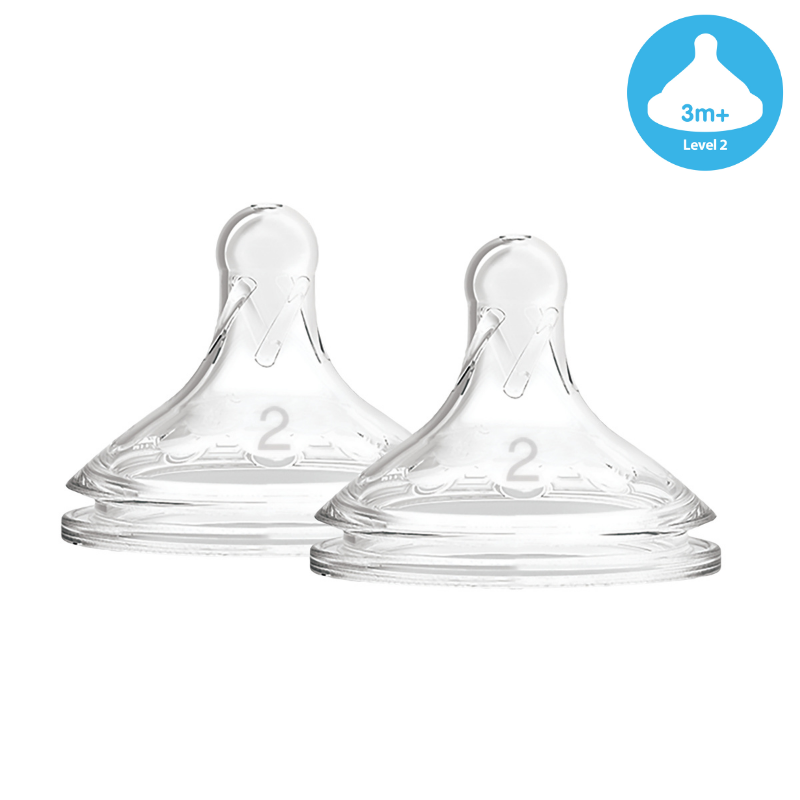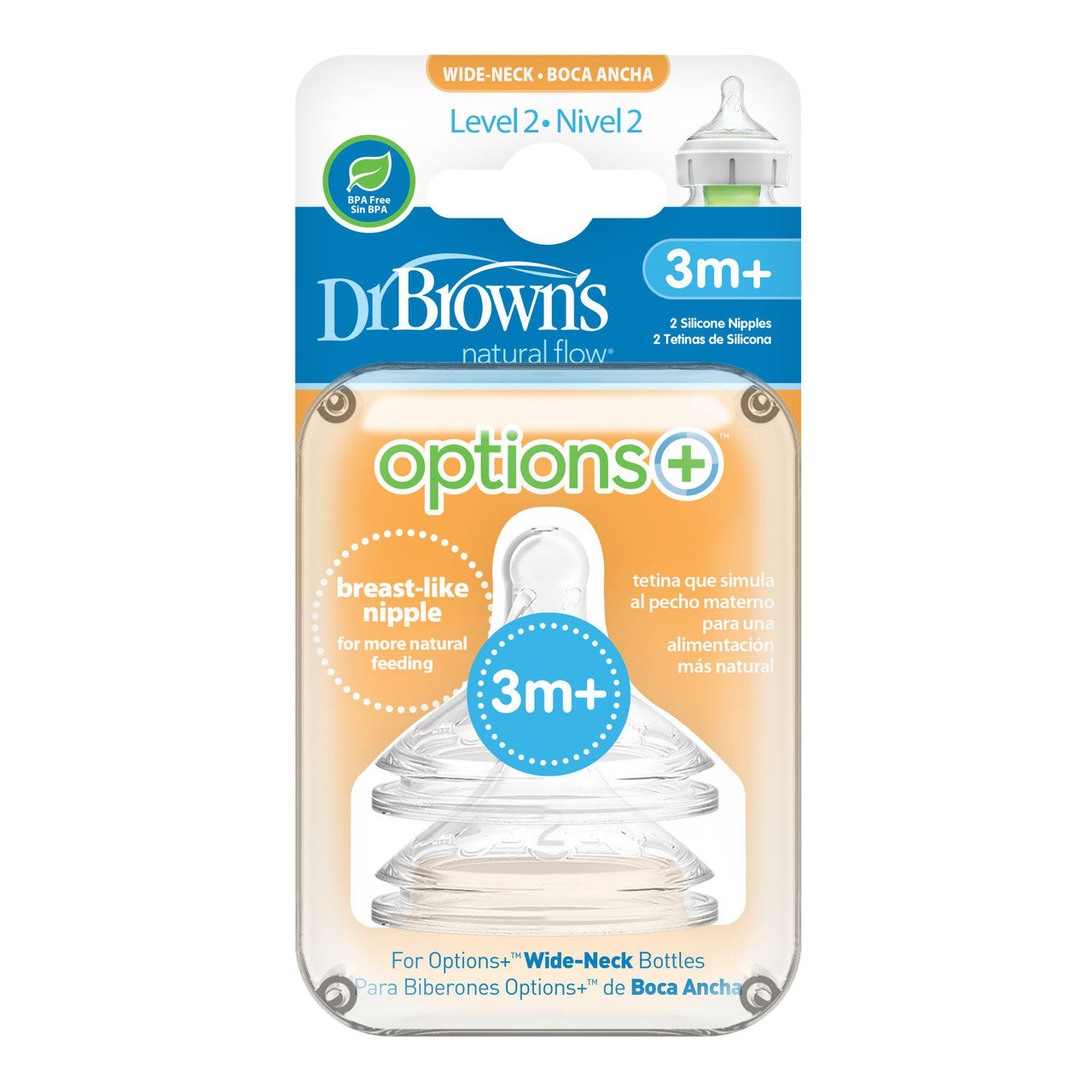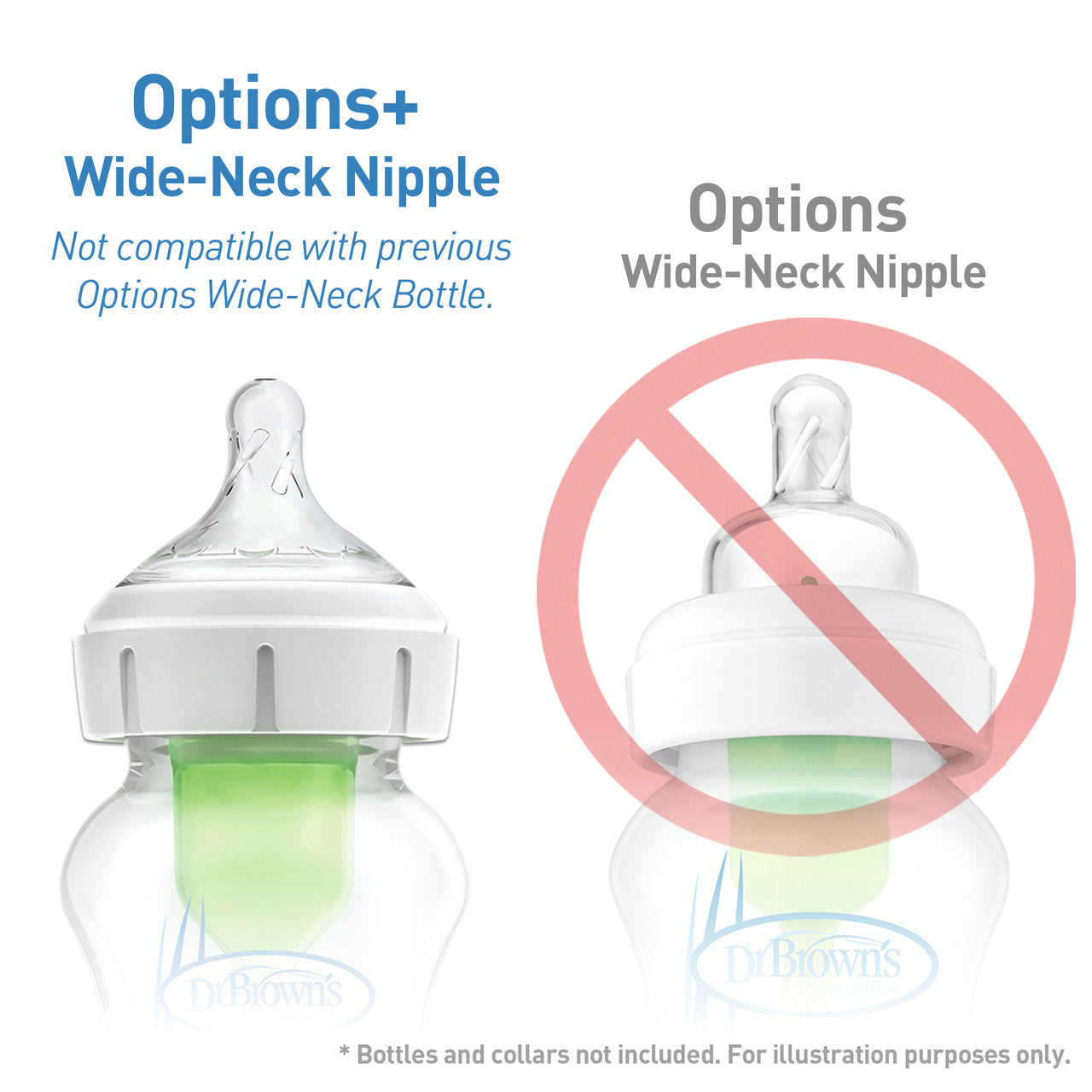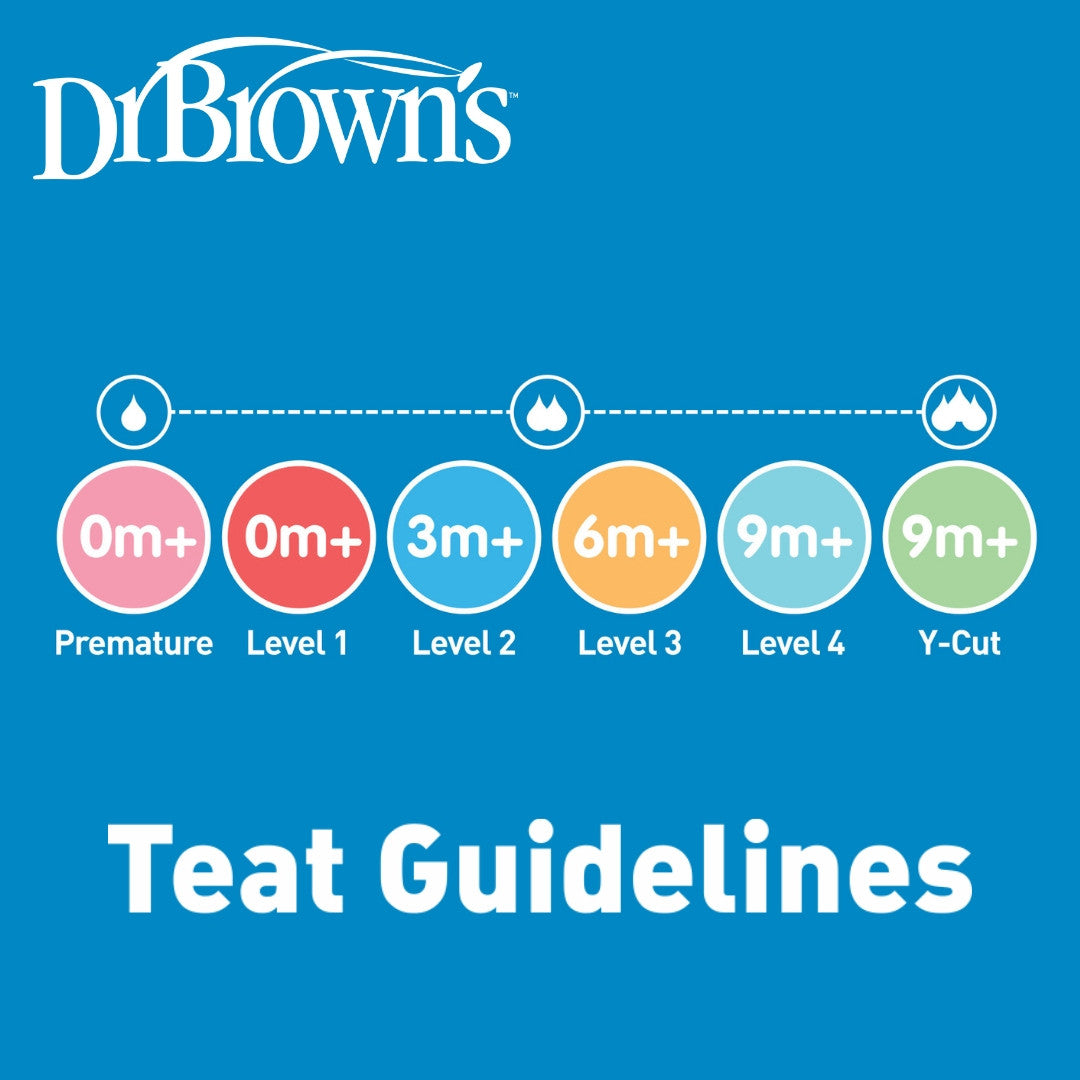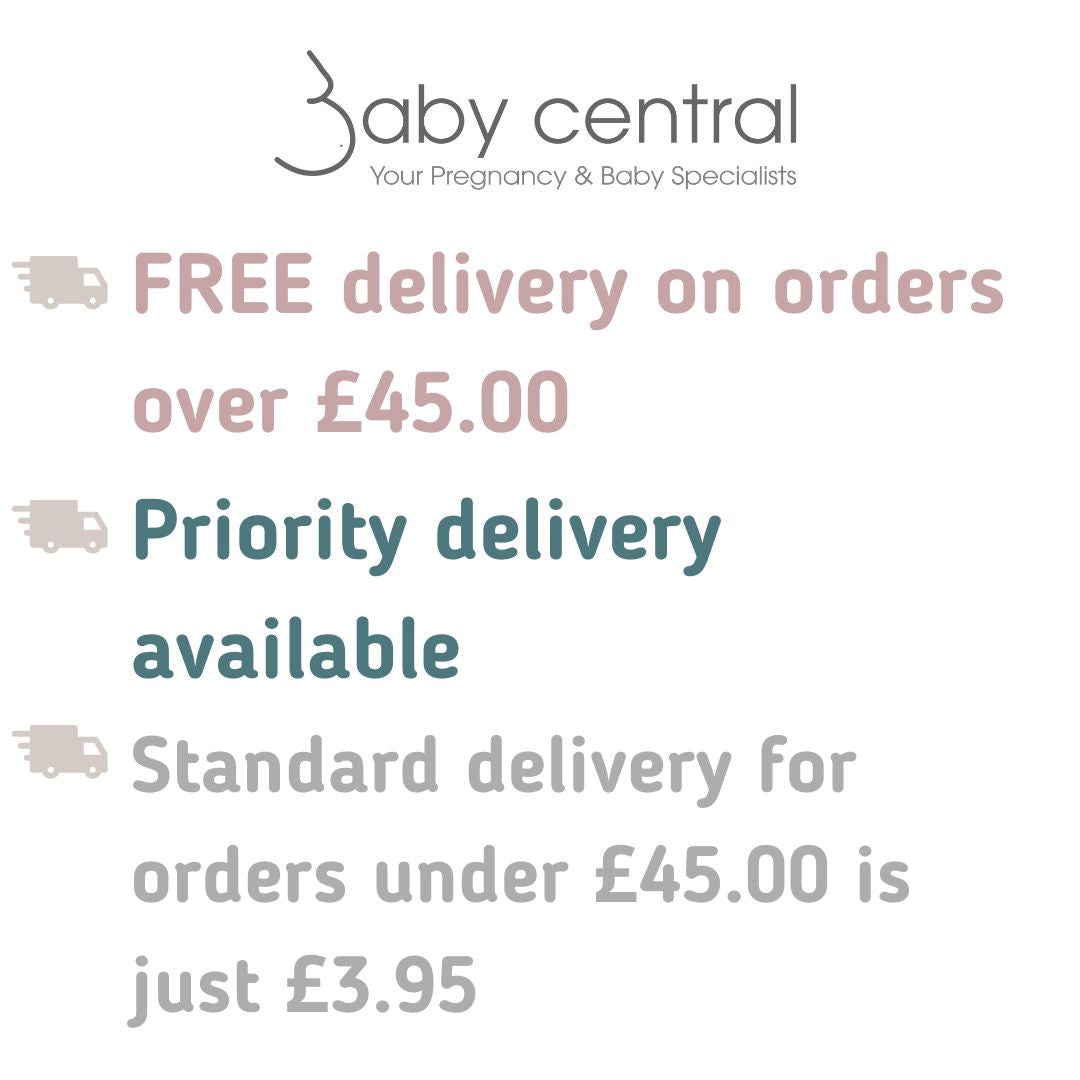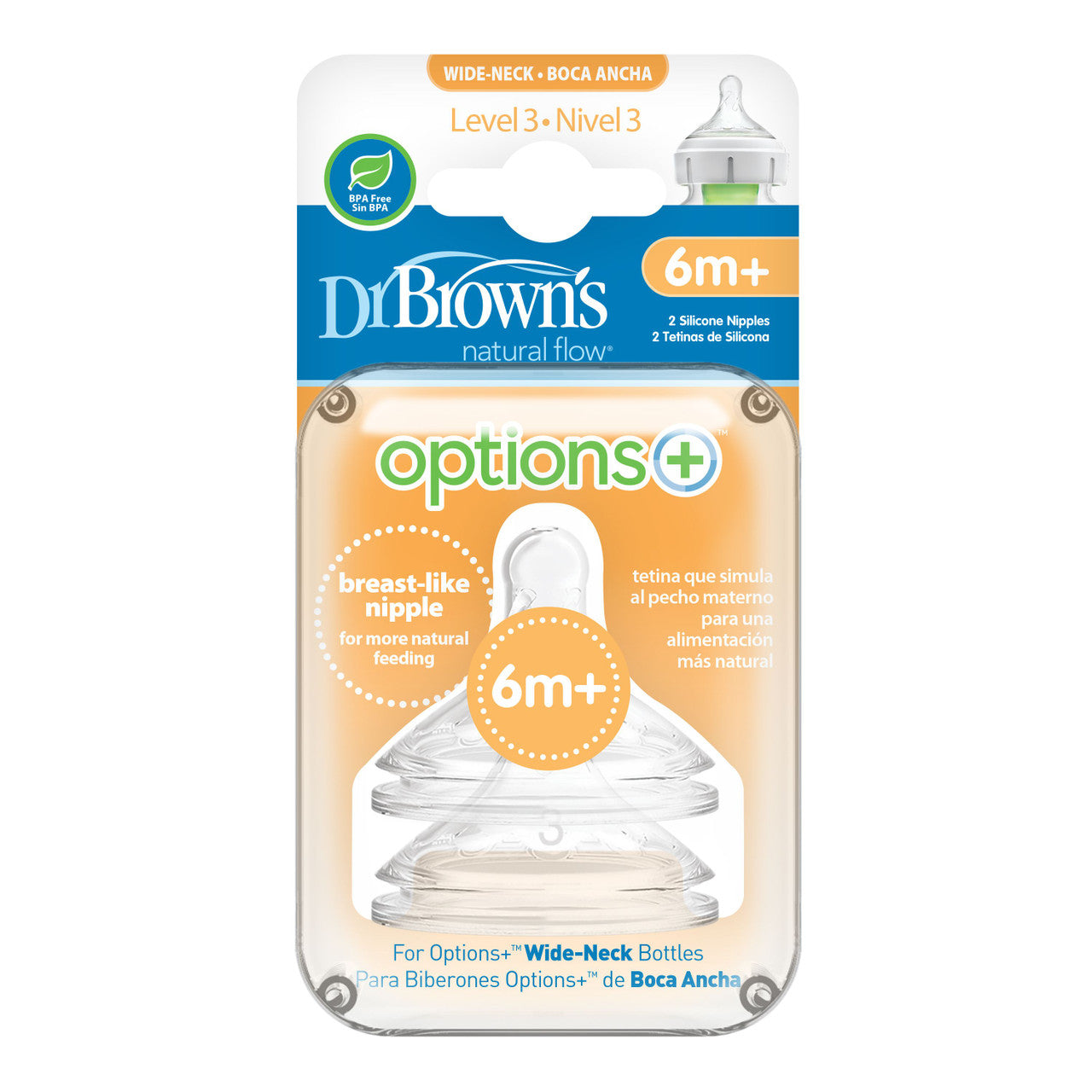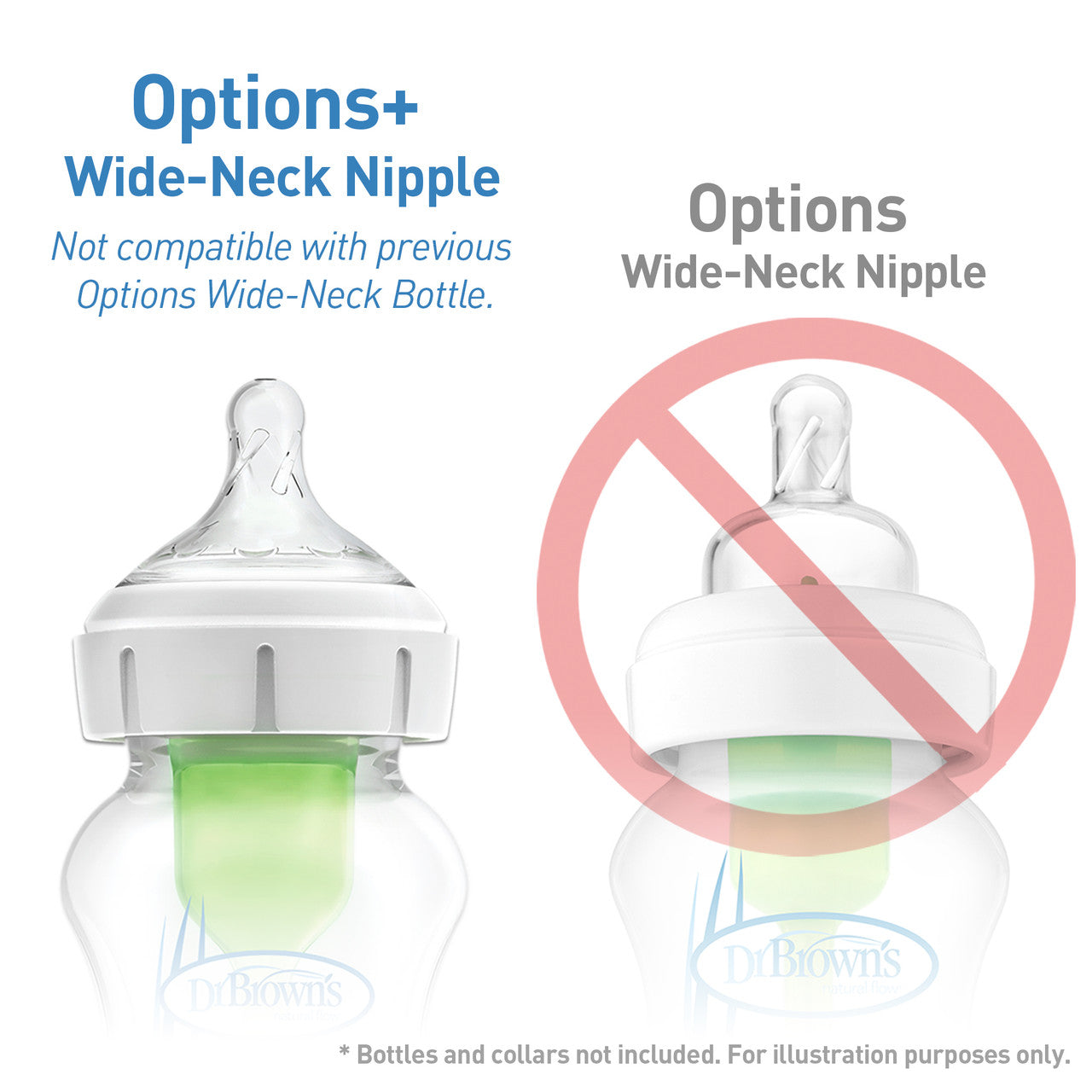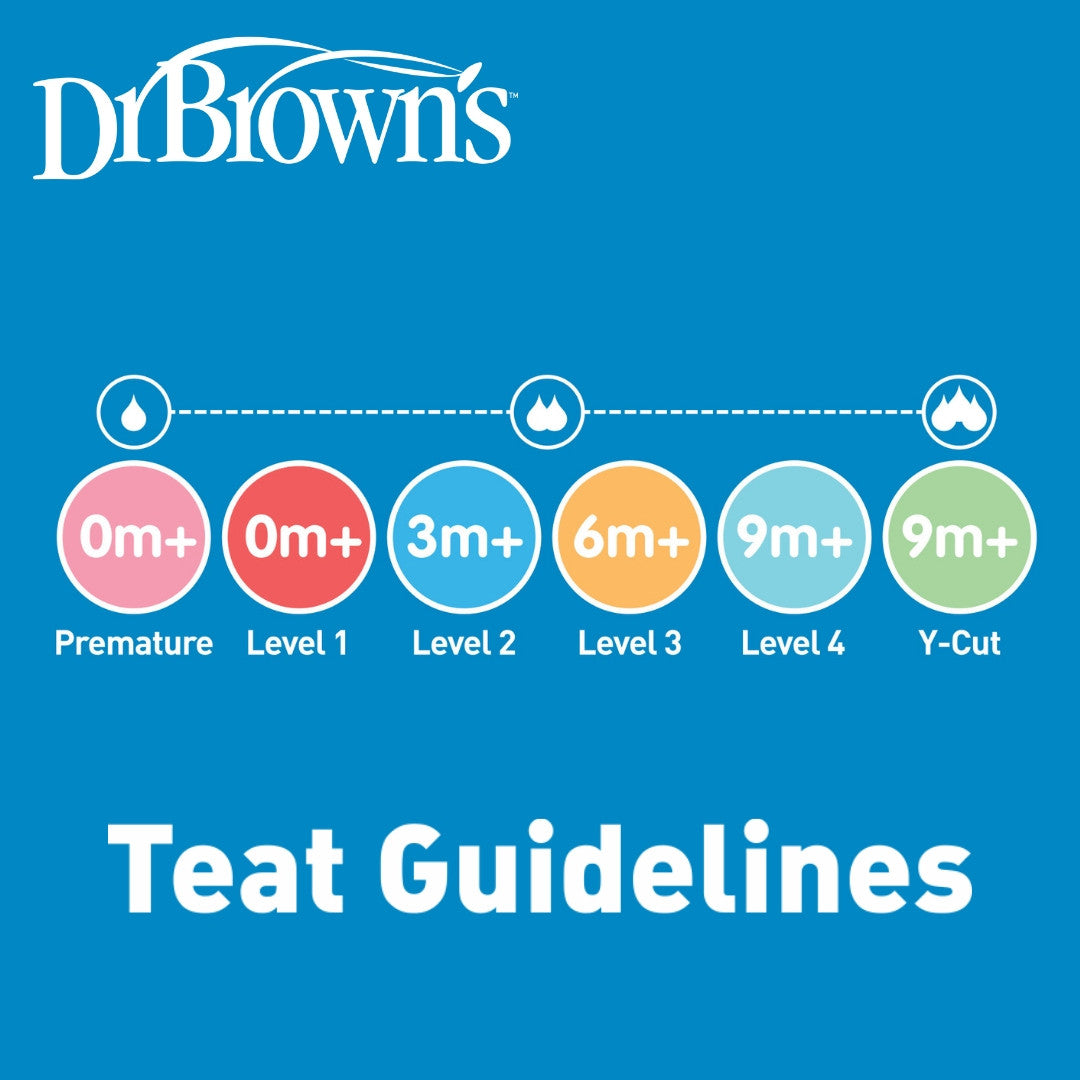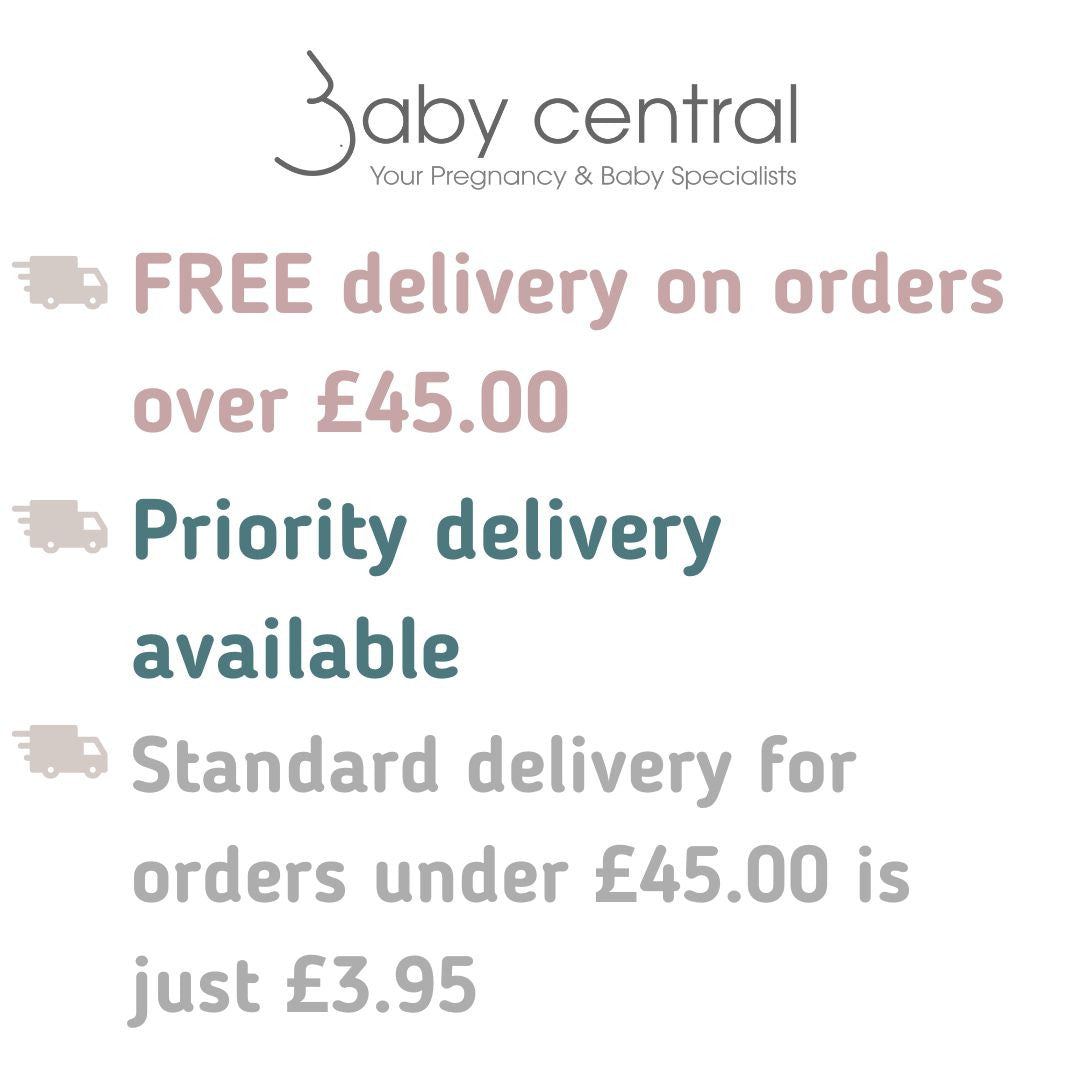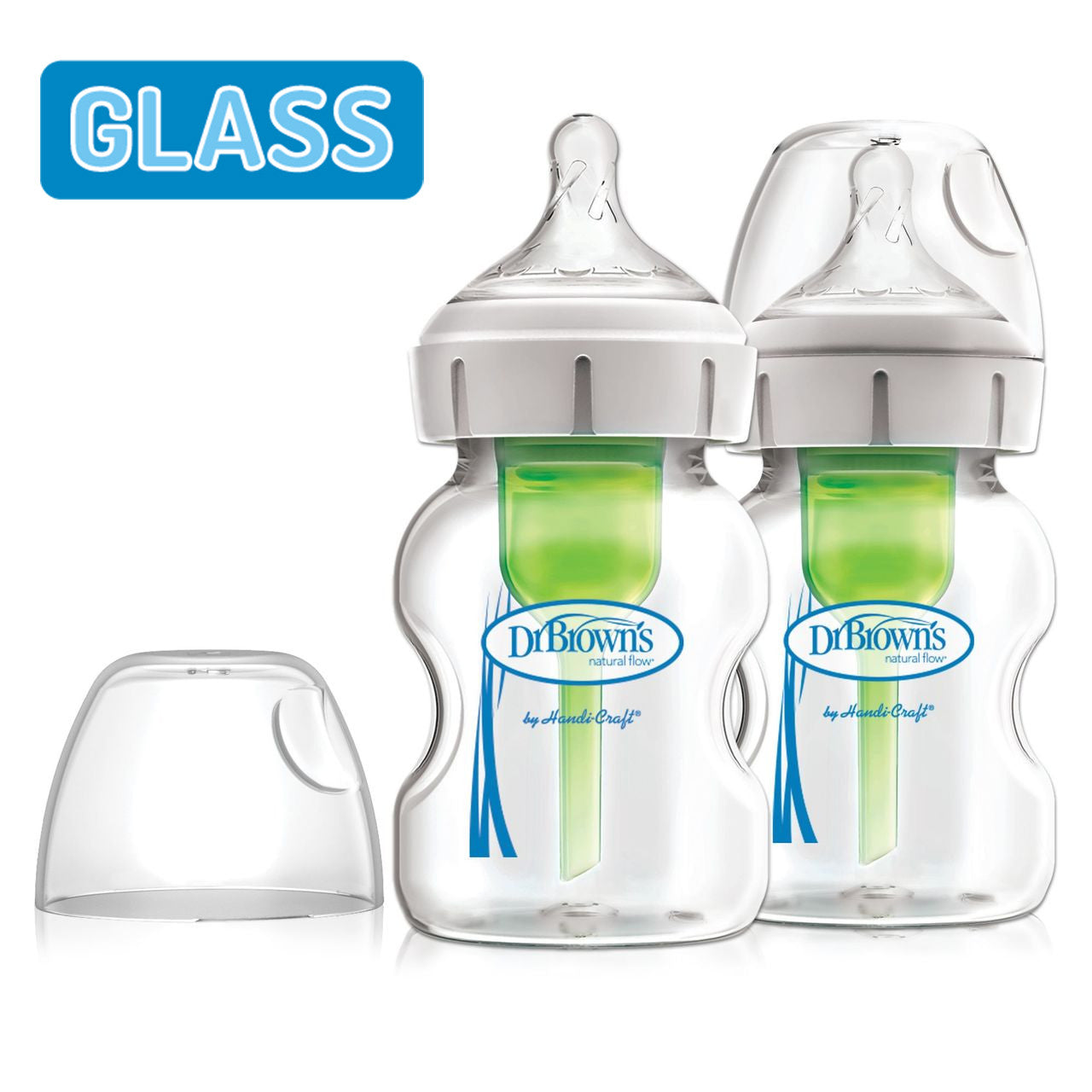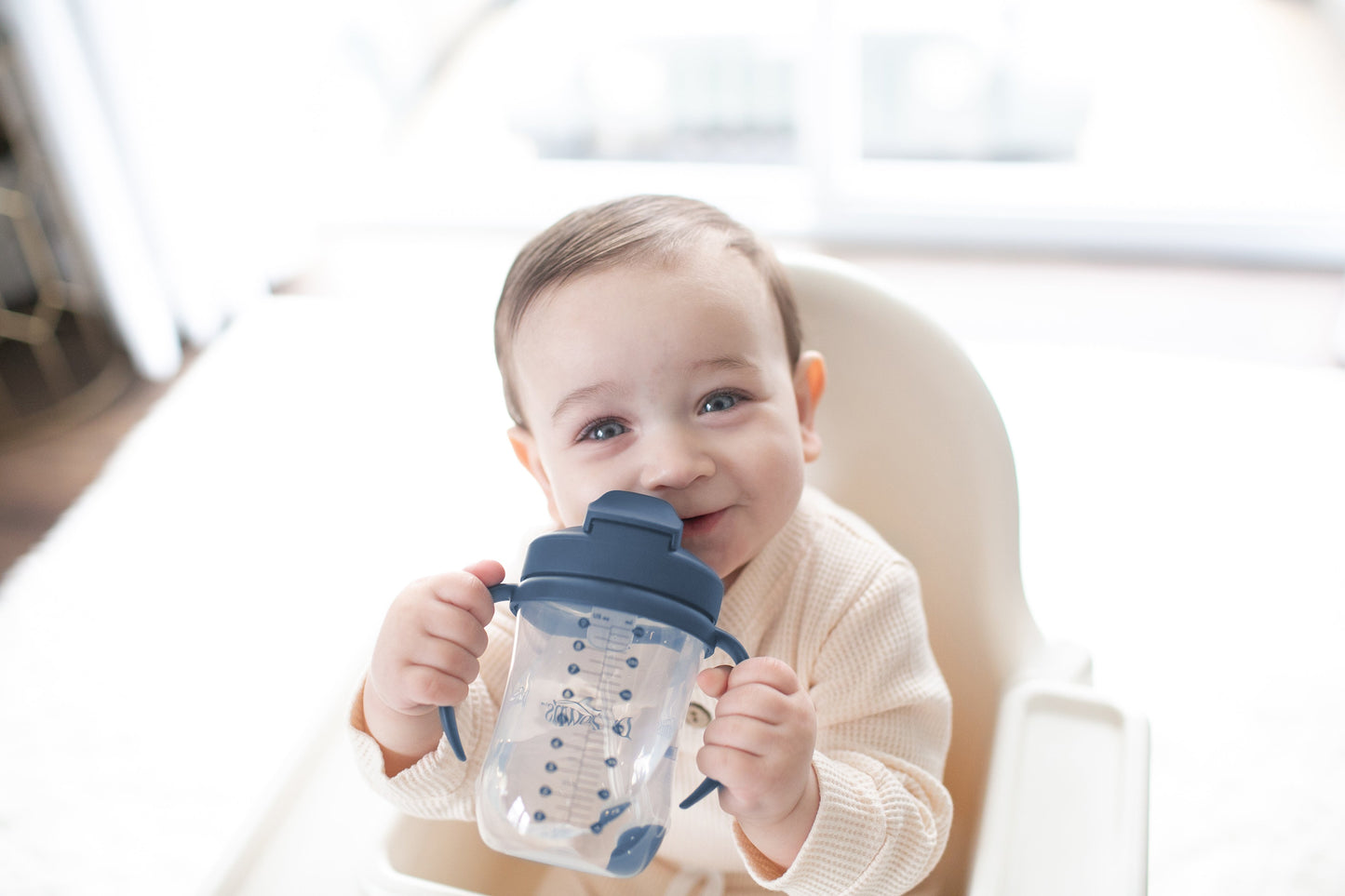
Watching the transitions of your baby grow from the infant stage into toddlerhood can be a beautiful yet emotional journey. Each milestone can come with a pinch of excitement, and sometimes a touch of nostalgia. As little ones all develop at their own pace, it's important to remember that every child will reach these key stages at different times. It can be quite natural to compare but there is absolutely no need to feel pressured. Especially when they are simple transitions such as going from a baby bottle to a sippy cup!
When to change from baby bottle to sippy cups
The NHS will recommend that you start to reduce use of a baby bottle from 12 months onwards. This is to help the oral function develop by learning to drink from different vessels and also to reduce issues with their teeth moving forward.
Some children will want to comfort feed from a bottle for much longer than others - usually when they are tired or upset. You know your child the best and it's important to acknowledge both their emotional and physical needs during any transition period.
"Do not put anything in it other than breast milk, formula milk or water, and do not add anything else (including sugar, cereals, baby rice or chocolate powder) to the feed." - www.nhs.uk
Types of sippy cups available
Dr. Brown's have a great range of sippy and trainer cups available. One of our most popular options is the Dr Brown's Milestones 270 ml Wide-Neck Sippy Bottle with Silicone Handles. If you have been using a Dr. Brown's bottle, this is a great way to introduce both a sippy style spout, alongside the handles to help your toddler get to grips with holding a bottle themselves! These are suitable from age 6 months onwards.

We also stock a fantastic range of alternatives. The Dr. Brown's Cheers 360 cups are recommended from 9 months onwards and allow your toddler to learn the art of drinking from an open cup, without the spills! With the option to take out the one-piece valve this cup is a fun way to establish feeding techniques and grow with your little one as they go through the stages of learning to drink from a cup.

Alongside these options, we also have weighted straw cups - currently available in Coral and Blue designs. These nifty little toddler trainer cups are perfect for helping to develop straw sucking skills and also allow for the liquid inside to be drunk from any angle. As another option which is suitable from 6 months, simply introduce one during mealtimes to help to associate meal times with drinking a little bit of water with their food.

Three tips to transition from baby bottle to sippy cup
Start Gradually: There is absolutely no need or expectation for your baby to suddenly go cold-turkey and only drink from a cup or toddler bottle. Simply start replacing one bottle feed a day with an alternative option. The best way to start is during a mealtime when your baby is more open to trying new things. But it is also important to ensure that you don't overwhelm your little one with too many choices in one go.
Choose the Right Cup: As mentioned, you know your baby the best, so try a few different options to see what suits their preferences. Some find that opting for a trainer cup with soft spouts or handles helps to make the transition easier, whereas other babies may prefer a straw cup. Don't feel the pressure to only use one style if you feel it's not working.
Offer Encouragement and Patience: As with most baby-relating things, some resistance is normal! So try and make the experience as fun as you can by demonstrating how to drink from the cup yourself and remember to praise their efforts when they try. Avoid forcing the transition and allow your child to adjust at their own pace - and with a spill proof cup you can ensure that any tantrums of frustration as mess-free!


